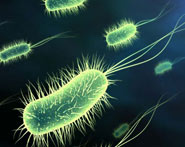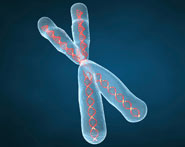


 النبات
النبات
 الحيوان
الحيوان
 الأحياء المجهرية
الأحياء المجهرية
 علم الأمراض
علم الأمراض
 التقانة الإحيائية
التقانة الإحيائية
 التقنية الحيوية المكروبية
التقنية الحيوية المكروبية
 التقنية الحياتية النانوية
التقنية الحياتية النانوية
 علم الأجنة
علم الأجنة
 الأحياء الجزيئي
الأحياء الجزيئي
 علم وظائف الأعضاء
علم وظائف الأعضاء
 الغدد
الغدد
 المضادات الحيوية
المضادات الحيوية|
Read More
Date: 18-10-2021
Date: 28-12-2021
Date: 9-9-2021
|
The vital processes—for example, biosynthetic reactions, muscular contraction, nerve impulse conduction, and active transport—obtain energy by chemical linkage, or coupling, to oxidative reactions. In its simplest form, this type of coupling may be represented as shown in Figure 1. The conversion of metabolite A to metabolite B occurs with release of free energy and is coupled to another reaction in which free energy is required to convert metabolite C to metabolite D. The terms exergonic and endergonic, rather than the normal chemical terms “exothermic” and “endothermic,” are used to indicate that a process is accompanied by loss or gain, respectively, of free energy in any form, not necessarily as heat. In practice, an endergonic process cannot exist independently, but must be a component of a coupled exergonic–endergonic system where the overall net change is exergonic. The exergonic reactions are termed catabolism (generally, the breakdown or oxidation of fuel molecules), whereas the synthetic reactions that build up substances are termed anabolism. The combined catabolic and anabolic processes constitute metabolism.
Fig1. Coupling of an exergonic to an endergonic reaction.
If the reaction shown in Figure 1 is to go from left to right, then the overall process must be accompanied by loss of free energy as heat. One possible mechanism of coupling could be envisaged if a common obligatory intermediate (I) took part in both reactions, that is,
A + C →I→B + D
Some exergonic and endergonic reactions in biologic systems are coupled in this way. This type of system has a built-in mechanism for biologic control of the rate of oxidative processes since the common obligatory intermediate allows the rate of utilization of the product of the synthetic path (D) to deter mine by mass action the rate at which A is oxidized. Indeed, these relationships supply a basis for the concept of respiratory control, the process that prevents an organism from burning out of control. An extension of the coupling concept is provided by dehydrogenation reactions, which are coupled to hydrogenations by an intermediate carrier (Figure 2).
Fig2. Coupling of dehydrogenation and hydrogenation reactions by an intermediate carrier.

 An alternative method of coupling an exergonic to an endergonic process is to synthesize a compound of high-energy potential in the exergonic reaction and to incorporate this new compound into the endergonic reaction, thus effecting a transference of free energy from the exergonic to the endergonic pathway. The biologic advantage of this mechanism is that the compound of high potential energy, ~ , unlike I in the previous system, need not be structurally related to A, B, C, or D, allowing to serve as a transducer of energy from a wide range of exergonic reactions to an equally wide range of endergonic reactions or processes, such as biosynthesis, muscular contraction, nervous excitation, and active transport. In the living cell, the principal high-energy intermediate or carrier compound is ATP (Figure 3).
An alternative method of coupling an exergonic to an endergonic process is to synthesize a compound of high-energy potential in the exergonic reaction and to incorporate this new compound into the endergonic reaction, thus effecting a transference of free energy from the exergonic to the endergonic pathway. The biologic advantage of this mechanism is that the compound of high potential energy, ~ , unlike I in the previous system, need not be structurally related to A, B, C, or D, allowing to serve as a transducer of energy from a wide range of exergonic reactions to an equally wide range of endergonic reactions or processes, such as biosynthesis, muscular contraction, nervous excitation, and active transport. In the living cell, the principal high-energy intermediate or carrier compound is ATP (Figure 3).
Fig3. Adenosine triphosphate (ATP) is shown as the magnesium complex.



|
|
|
|
لشعر لامع وكثيف وصحي.. وصفة تكشف "سرا آسيويا" قديما
|
|
|
|
|
|
|
أستراليا تطلق أكبر سفينة تعمل بالطاقة الكهربائية في العالم
|
|
|
|
|
|
|
العتبة العباسية المقدسة تجري القرعة الخاصة بأداء مناسك الحج لمنتسبيها
|
|
|